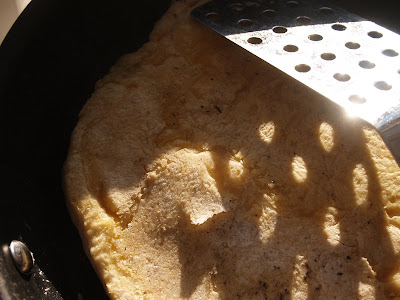
I'm always a little surprised when I read that British bumblebees are in decline to the point of near-extinction, because there are so many in our garden. This morning I discovered the reason: I have the same taste in flowers as bumblebees.
Bumblebees are one of the early signs of spring in our garden: when the snowdrops are in full flower, there they are, bumbling about on the rosemary bush by the kitchen door. And I see them daily until the end of autumn. I thought that's how it was in all gardens, but apparently not.
Here's the recipe for encouraging bumblebees into your garden:
- make sure you have some early-flowering plants such as crocus, rosemary, clematis, fruit blossom - you will find these just as life-enhancing as the bumblebees, which come out earlier than other bees (the queens come out of hibernation in February)
- in summer, give up bedding in favour of cottage garden flowers and native wildflowers. Sages, foxgloves, thymes, thistles of all sorts (including artichokes, if you can bear to let some of them flower)
- in high summer leave at least some of your lawn uncut, so that bumblebees can feed on clover and birdsfoot trefoil
- plant a wildflower meadow, however small - you can use seed saved from verges in your area if the price of a packet seems high
- opt for single and semi-double flowers rather than doubles
- plant a wide range of bumblebee-friendly plants, to encourage several of the 25 British species - three are already said to be nationally extinct. Bumblebees have different-lengthed tongues, so need different types of flower to get at the nectar
- provide somewhere for bumblebees to overwinter. You can buy or make special nesters, but our garden is untidy enough for bumblebees to be left to their own devices

This is a seasonal list of bumblebee-friendly plants supplied by the
Bumblebee Conservation Trust. We have most of them in our garden (no heathers though - wrong soil):
February, March and April: apple, bluebell, broom, bugle, cherry, erica carnea (heather), flowering currant, lungwort (pulmonaria), pear, plum, pussy willow, red dead-nettle, rosemary, white dead-nettle
May and June: alliums, aquilegia, birdsfoot trefoil, bugle, campanula, ceanothus, chives, comfrey, cotoneaster, escallonia, everlasting sweet pea, everlasting wallflower, foxglove, geranium, honeysuckle, laburnum, lupin, meadow cranesbill, monkshood, poppies, raspberries, red campion, single roses, sage, salvia, thyme, vetch, white clover, wistaria, woundwort
July and August: borage, bramble, buddleia, cardoon, catmint, cornflower, delphinium, heathers, hollyhock, hyssop, knapweed, lavender, lesser burdock, marjoram, mint, penstemon, purple loosestrife, red clover, rock-rose, sainfoin, scabious, sea holly, snapdragons, St John's wort, sunflower, teasel, thistles, viper’s bugloss

























































